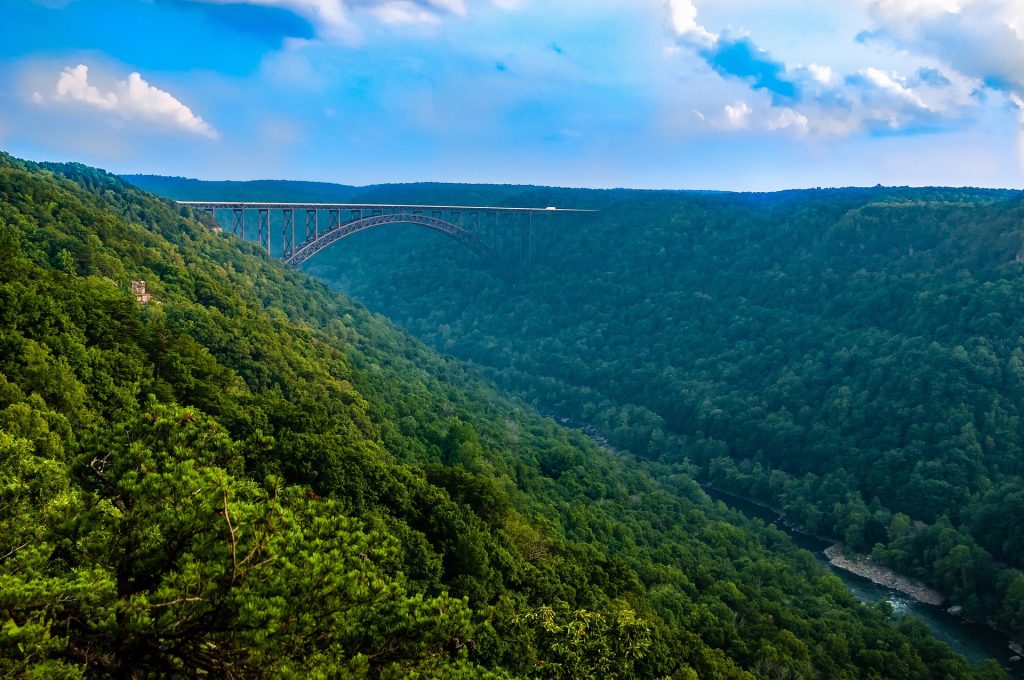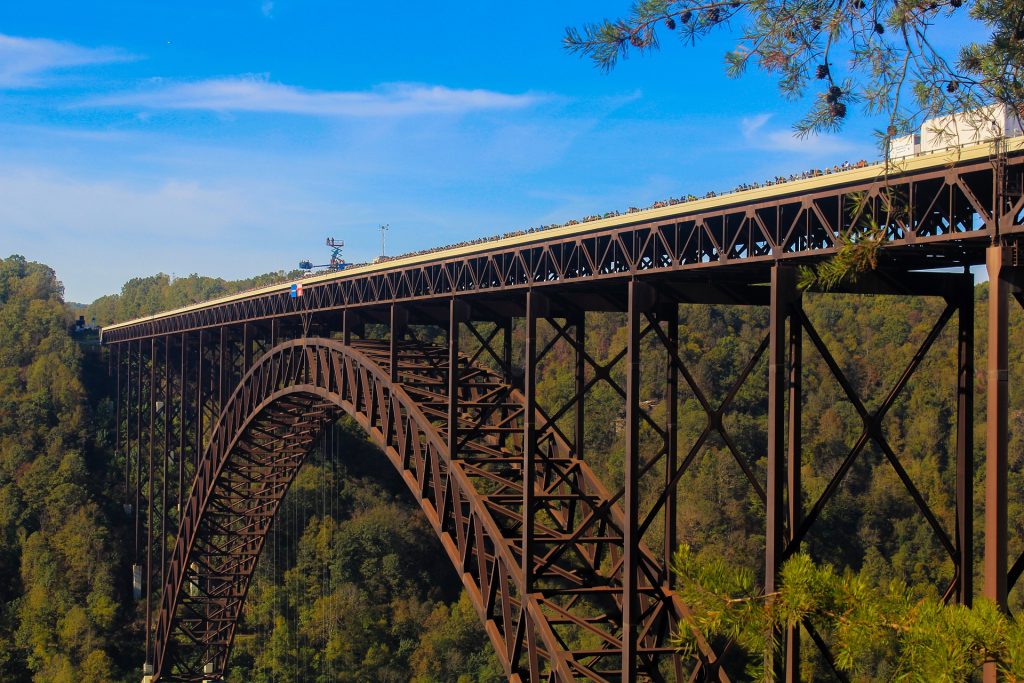New Gorge River National Park is located in the central part of southern West Virginia. The park covers an area of 9.375 square miles (24.28 sq km), which is only a portion of the larger 114.06 square miles (295.42 sq km).
The river was originally established as a national river in 1978 covering a distance of 53 miles (85 km). The designated river extended from Hinton down to Hawks Nest State Park. Only about 10% of the national river area is established as the national park boundaries.
The river is the foundation of the national park. It is the longest and deepest river gorge found within the Appalachian Mountains. The river gorge features several sandstone-shale boulders that are located throughout the terrain. Some reach over 1,000 feet (300 m) of exposed boulders. Plant and animal fossils can be seen in some of the boulders adding to the intrigue of the gorge.
The river displays a variety of riverine characteristics that include backwaters, cascades, chutes, glides, rapids, riffles, runs, shoals, torrents, and waterfalls. The ecosystem is diverse featuring types of forest, forest seeps, and wetlands.
The park features both natural and cultural significance. The Nuttallburg Coal Mining Complex and Kay Moor reflect the nation’s coal mining history. There are a variety of historical ruins and architectural structures. It is a taste from life during the 18th and 19th centuries.
There are over 60 species of mammals calling the park area home. The Virginia big-eared and Indiana bats are two of the endangered species. There are at least 48 species of amphibians along with a variety of birds from bong birds to predators.
Photos
Things to See
New River Gorge National Park Trails
The national park and immediate area provide over 50 miles (80 km) of hiking trails. The trails vary from easy to relatively difficult. Of course, rock-climbing is for the experienced. Some of the trails are accessible for bikers.
Park Protection
New Gorge River National Park was first established as a national river to protect the unique and diverse terrain of the river gorge. There are 1,342 identified species of vegetation with over 50 of them recognized as rare.
The park also protects the habitat for 63 species of mammals and 48 species of amphibians, so of them are endemic with some being endangered.
Sources
- All Trails, Best Trails in New River Gorge National River, West Virginia, https://www.alltrails.com/parks/us/west-virginia/new-river-gorge-national-river, retrieved January 2021.
- Britannica, New River Gorge Bridge, https://www.britannica.com/topic/New-River-Gorge-Bridge, retrieved January 2021.
- National Parks Foundation, Wild, Wonder Waters, https://www.nationalparks.org/explore-parks/new-river-gorge-national-river, retrieved January 2021.
- National Park Service, New River Gorge, https://www.nps.gov/neri/index.htm, retrieved January 2021.
- Visit Southern West Virginia, New River Gorge National River, https://visitwv.com/npswv/new-river-gorge-national-river/, retrieved Janu; 2021.
- West Virginia Public Broadcasting, New River Gorge to Be Designated As A National Park, https://www.wvpublic.org/government/2020-12-22/new-river-gorge-to-be-designated-as-a-national-park, retrieved January 2021.




